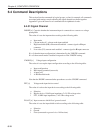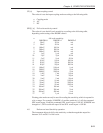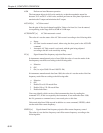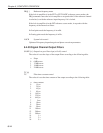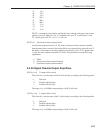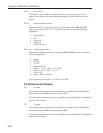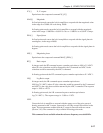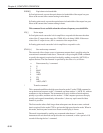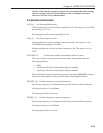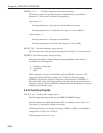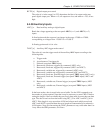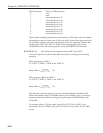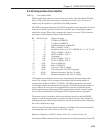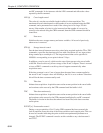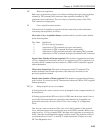
6-18
Chapter 6, COMPUTER OPERATION
ENBW[.] Equivalent noise bandwidth
In fixed point mode, reports the equivalent noise bandwidth of the output low-pass
filters at the current time constant setting in microhertz.
In floating point mode, reports the equivalent noise bandwidth of the output low-pass
filters at the current time constant setting in hertz.
This command is not available when the reference frequency exceeds 60 kHz.
NN[.] Noise output
In fixed point mode causes the lock-in amplifier to respond with the mean absolute
value of the Y output in the range 0 to 12000, full-scale being 10000. If the mean
value of the Y output is zero, this is a measure of the output noise.
In floating point mode causes the lock-in amplifier to respond in volts.
STAR [n] Star mode setup command
The star mode allows faster access to instrument outputs than is possible using the
conventional commands listed above. The mode is set up using the STAR command
to specify the output(s) required and invoked by sending an asterisk (ASCII 42) to
request the data. The data returned is specified by the value of n, as follows:
n Data returned by * command
0X
1Y
2 MAG
3 PHA
4 ADC1
5XY
6MP
7 ADC1;ADC2
* Transfer command
This command establishes the high-speed transfer mode. Use the STAR command to
set up the desired response to the * command, and then send an * (ASCII 42), without
terminator, to the instrument. The instrument will reply with the selected output as
quickly as possible, and then wait for another *. If the computer processes the reply
quickly and responds immediately with another *, then very rapid controlled data
transfer is possible.
The first transfer takes a little longer than subsequent ones because some overhead
time is required for the model 7220 to get into the high speed transfer mode. When in
this mode, the front panel controls are inactive and display is frozen.
The mode is terminated by sending any command other than an *, when the
instrument will exit the mode and process the new command, or after a period of 10
seconds following the last * command.



